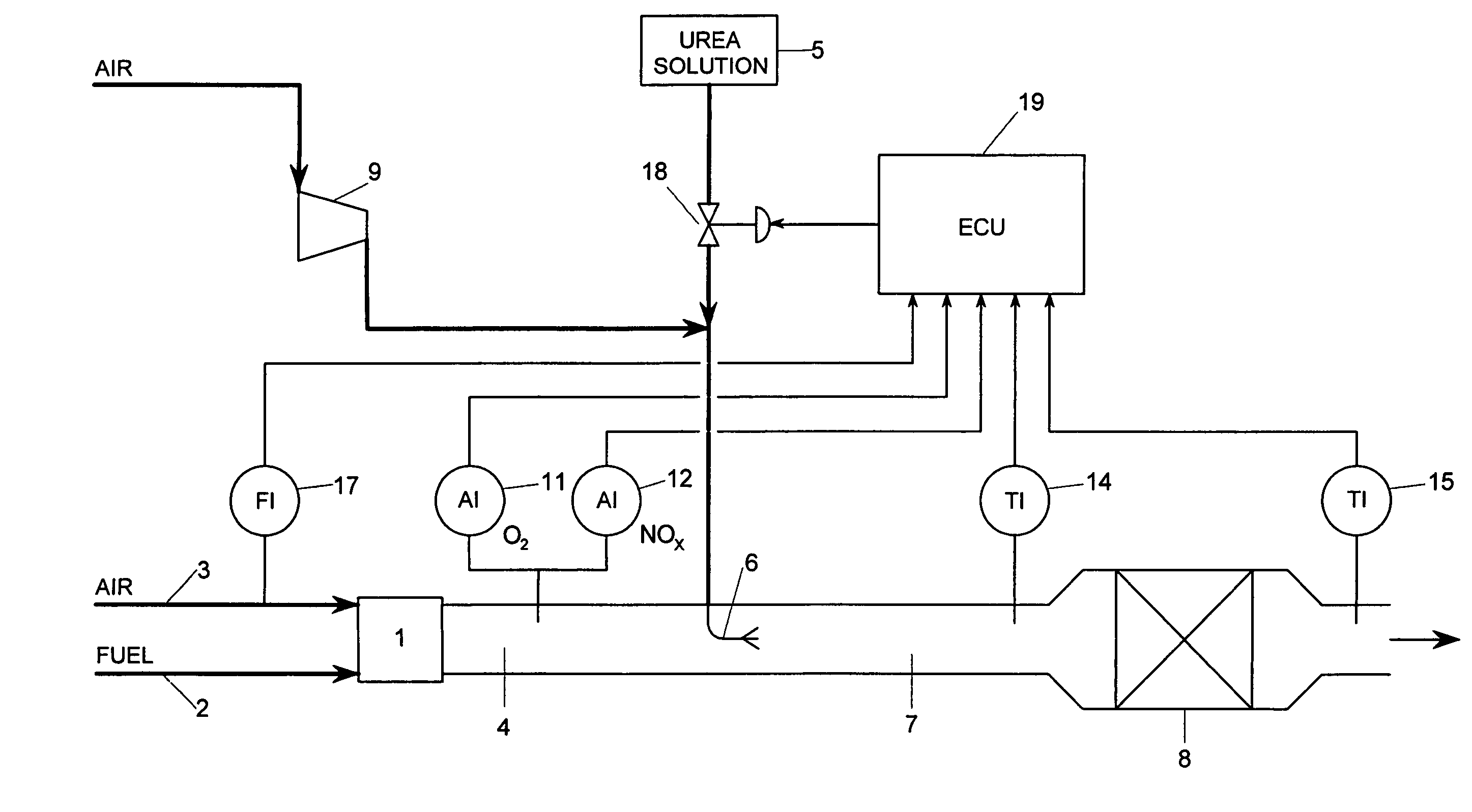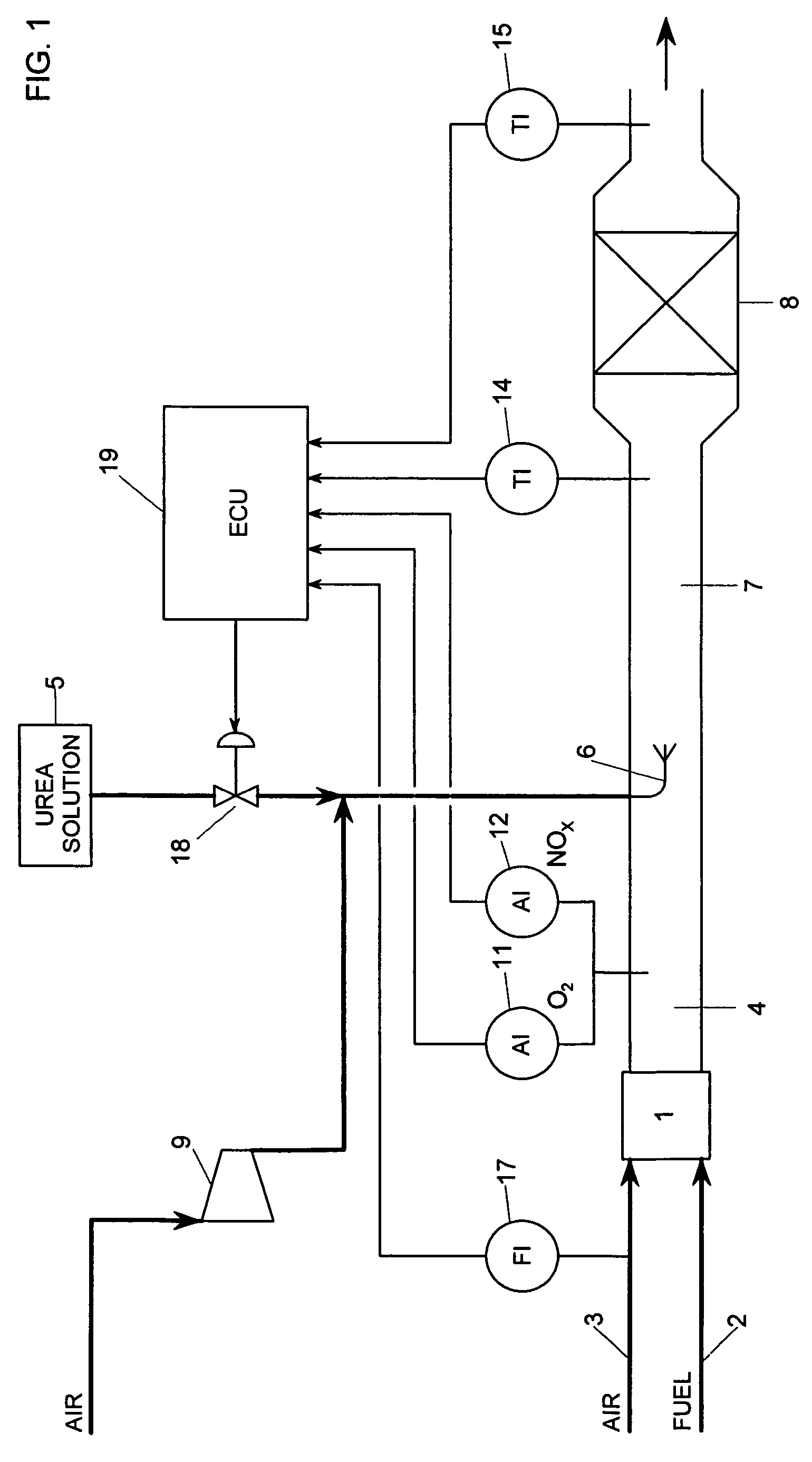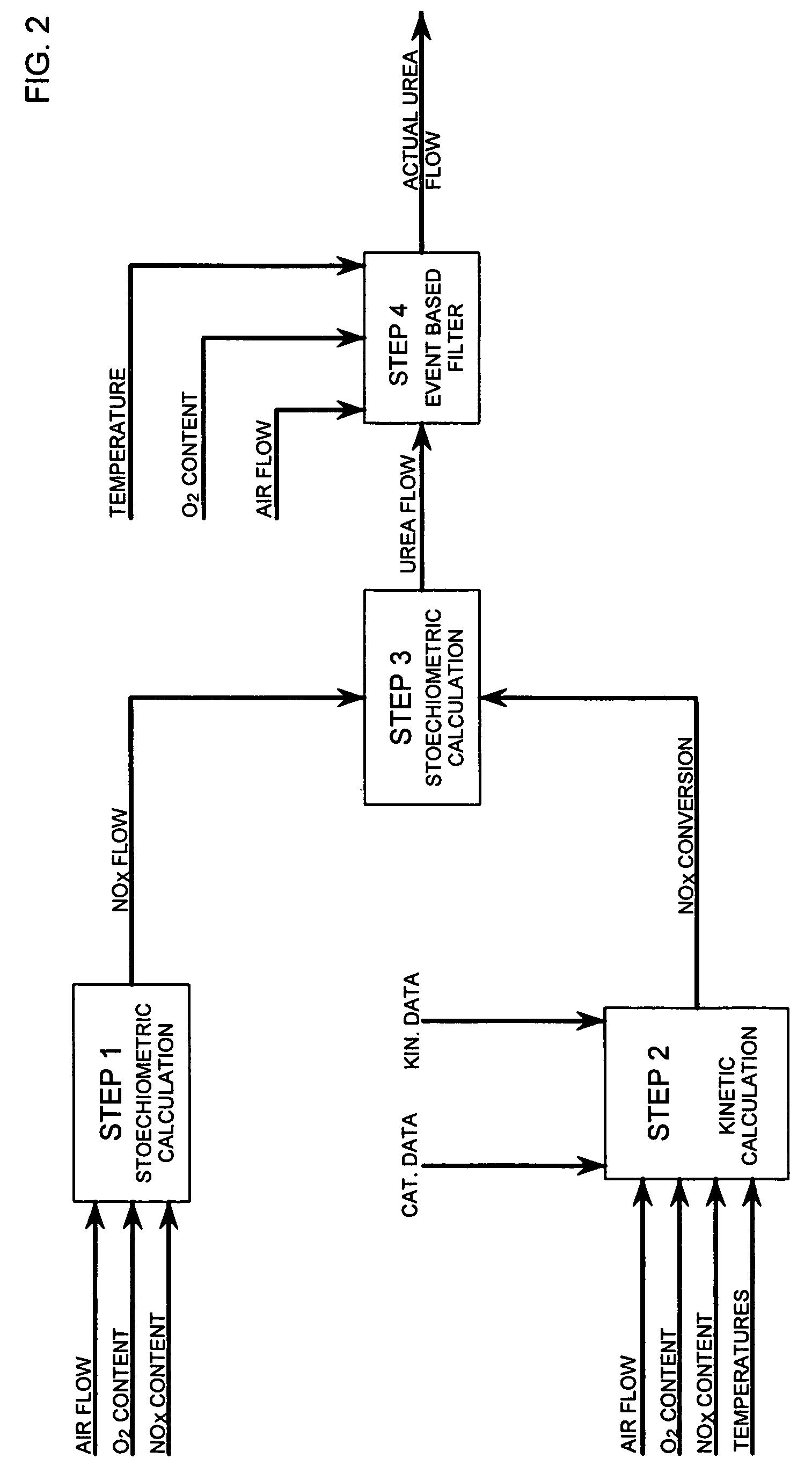Method for controlling injection of reducing agent in exhaust gas from a combustion engine
a technology of reducing agent and combustion engine, which is applied in the direction of machine/engine, exhaust treatment electric control, separation process, etc., can solve the problems of increasing and reducing the load of the engine, and achieve the effect of simple and reliable measuremen
- Summary
- Abstract
- Description
- Claims
- Application Information
AI Technical Summary
Benefits of technology
Problems solved by technology
Method used
Image
Examples
Embodiment Construction
[0025]A complete combustion of a fuel CHx in combustion engines would be:
CHx+(1+x / 4)O2→CO2+x / 2 H2O (1)
where O2 is oxygen in combustion air.
[0026]In diesel engine driven vehicles combustion takes place with a certain amount of excess air. This results in formation of nitrogen oxides, NOx in the exhaust gas, which is a serious pollution for the environment.
[0027]NOx can be reduced by ammonia, NH3, which however is difficult to store in vehicles, and an aqueous solution of ammonia or urea, H2NCONH2, is therefore preferred as a reducing agent.
[0028]The ammonia is formed when urea decomposes as it is sprayed into the hot exhaust gas according to the following reaction:
H2NCONH2+H2O→2 NH3+CO2 (2)
[0029]The mixture of exhaust gas and reductant, ammonia, then passes over a catalyst where the nitrogen oxides, nitrogen monoxide, NO and nitrogen dioxide, NO2, react with the ammonia to form nitrogen and water according to at least the following reactions:
4 NO+4 NH3+O2⇄4 N2+6 H2O (3)
and
6 NO2+8 ...
PUM
 Login to View More
Login to View More Abstract
Description
Claims
Application Information
 Login to View More
Login to View More - R&D
- Intellectual Property
- Life Sciences
- Materials
- Tech Scout
- Unparalleled Data Quality
- Higher Quality Content
- 60% Fewer Hallucinations
Browse by: Latest US Patents, China's latest patents, Technical Efficacy Thesaurus, Application Domain, Technology Topic, Popular Technical Reports.
© 2025 PatSnap. All rights reserved.Legal|Privacy policy|Modern Slavery Act Transparency Statement|Sitemap|About US| Contact US: help@patsnap.com



